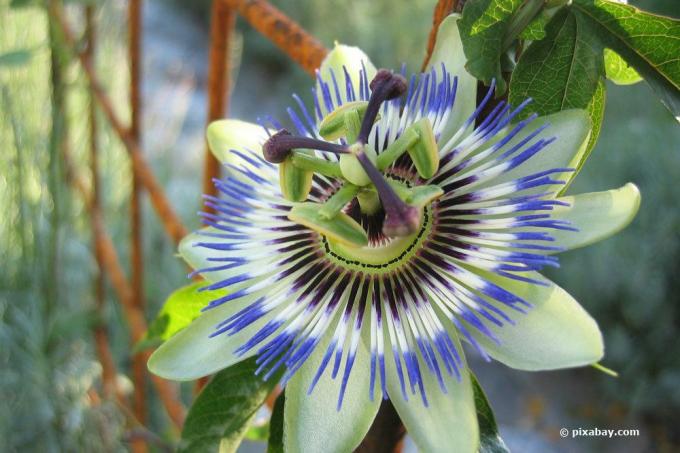
table of contents
- Is the passion flower hardy?
- Measures when there is a risk of frost
- The preparatory cut
Passion flowers, botanically also as Passiflora called, convince with a variety of flowers from white to pink to blue and purple. If they top up trellises, trees or pergolas, they impress with a striking display of flowers. So that it can shine undisturbed in the following year, it depends on the correct wintering. Here you will find everything you need to know about the question of whether Passiflora is hardy, as well as useful tips for successful wintering.
Is the passion flower hardy?
With a total of over 500 species, the genus of passion flowers is extremely diverse. There are also other cultivated subspecies, some of which differ significantly from the natural representatives. Therefore, the question of whether passion flowers are hardy cannot be answered across the board.
Since the large number of the varieties come from subtropical or even tropical areas, they are unfortunately not adapted to European climatic conditions and are very clear not as hardy to call.
A few varieties, on the other hand, come from more temperate regions and indeed can withstand a certain amount of frost. However, the number of moderately hardy and at the same time generally commercially available specimens is limited to just a handful of Passiflora species:
- violacea - frost hardiness to about -10 ° C
- tucumanensis - Winter hardy to around -15 ° C
- lutea - frost hardy to around -15 ° C
- caerulea (Blaume Passion flower) - frost-resistant down to approx. -15 ° C
- incarnata (passion flower made flesh) - frost-resistant to around -20 ° C
Even these "hardy" species should not be compared with other plants, which in fact can cope with all the frosts that usually occur in our region. Values of -15 ° C or even -20 ° C may sound like very low temperatures. But even in the lowlands, a clear night in the high phase of winter can produce values that are again significantly lower. Even the most resilient types of passion flower then quickly reach the limits of their resilience and have little chance of survival without protection.

Measures when there is a risk of frost
No matter whether hardy or not hardy passion flowers overwinter measures are required to ensure protection against winter temperature lows. The sensible measures differ depending on whether it is a container plant or a passion flower in the field.
In the field
If a conditionally hardy Passiflora is grown outdoors, the following work should be carried out to provide adequate protection against frost:
- Cut back in autumn
- Above all, cover the roots with brushwood, straw or cold protection fleece
- In deep frosts: cover above-ground parts of the plant with protective fleece
- Do not fertilize in winter
- Do not water during frost to avoid root damage from freezing water
tip: The choice of location does not have to do directly with preparatory measures before wintering, but you can With a suitable location, the passion flower paves the way for good overwintering chances when planting place. Ideally, the plants should be placed in a protected location, for example near the house or under a protective, evergreen shrub.
In the plant pot
When keeping in a plant pot, the measures for wintering look a little different:
- Intensive pruning in autumn
- From temperatures around 10 ° C and below, move the plant to winter quarters
- Frost-free, but cool location with around 10 ° C to 12 ° C
- Bright location without direct sunlight
- Good locations, for example, in a cold winter garden or greenhouse
- The more intensive the cut back, the darker the room can be
- Significantly reduce the amount of fertilizer used, but do not adjust it completely due to the limited pot volume
Attention: Passion flowers planted in pots should not be overwintered outdoors. Due to the limited volume of the pot, the frost penetrates the roots much more strongly than it would in the soil. Under these conditions, even passion flowers, which are actually hardy, can be severely damaged!
The preparatory cut
Both outdoors and as a container plant, pruning is one of the first preparatory measures in autumn. The above-ground components of the plant can be almost completely eliminated. Depending on the advisor, it is suggested to leave around 10 to 30 centimeters of the above-ground shoots. From these, the passion flower quickly produces young shoots in spring with rising temperatures, so that it soon enriches the garden in its usual splendor.
In the case of potted plants, on the other hand, the pruning can be less severe, as winter damage to the shoots is excluded when choosing the right location. In general, one can say that the intensity of the pruning decreases with decreasing temperature and brightness of the Winter quarters should be more intense, since the plant can no longer photosynthesize without heat and light operates.




